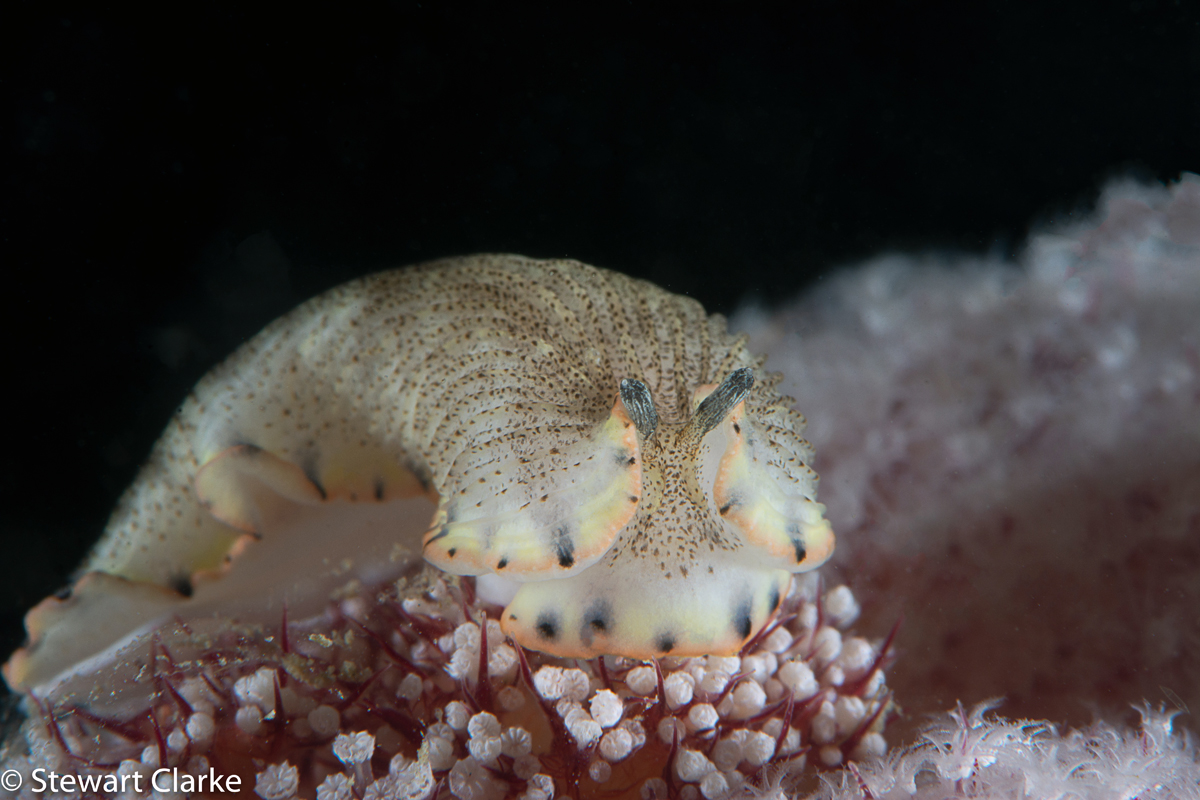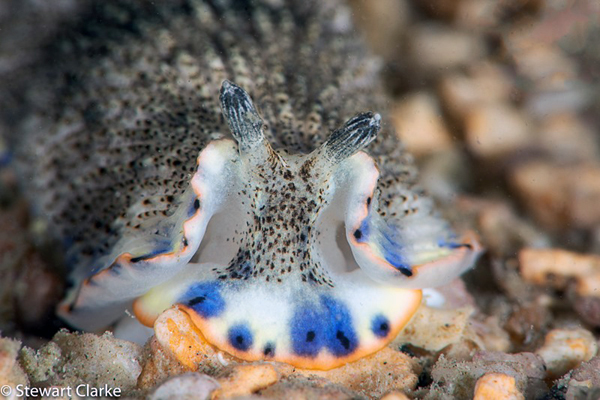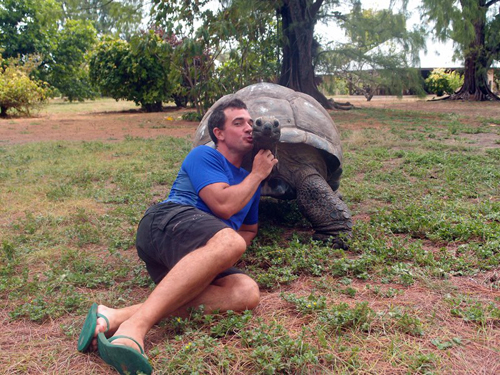 |
Image courtesy of Stewart Clarke
Arabian Gulf, UAE
 |
Terry Gosliner and Shireen Fahey named this species for its blue spots along the edge of the notum, oral veil and foot. Otherwise the animal is white with reddish brown pigment randomly distributed over the dorsum. The low ridges on the dorsum have a series of brown to black specks. There is also an orange line along the margin of the notum. The blue spots have a black dot in their center. This species feeds on the soft coral, Dendronephthya, and can often be seen trailing, a behavior many have speculated about. Why do you think they do this?
Good Show Stewart!
Sammamish, WA 98074 Nov., 2018 Send Dave email at davidwbehrens@gmail.com |
Stewart and friend
 |
Stewart has been living and working in the United Arab Emirates for over 10 years after escaping from the grey skies of the UK. For over half of that time he has been systematically searching for Nudibranchs in the surrounding waters of Eastern Arabia, and to date has recorded over 320 species for the area. He believes a number of the obscure species he finds are being brought in via the ballast water of oil tankers, especially those being found in and around the oil terminal in Fujairah. He helps run a Facebook page called UAEbranchers that records and discusses local Nudibranch discoveries. Stewart also posts a selection of his photos on instagram: @moistmacro as well as on the www.moistmacro.com website
Stewart has also collated some of his photos in an album on his
photography website
Stewart Clarke WEBMASTER'S NOTES: By the way folks, one of Stewart's images graces the cover of the new Nudibranchs and Sea Slugs - Indo-Pacific edition! |

Attention all you Sluggers, and you know who you are! The NSSI 2nd edition is now available in ebook PDF and book form . The hard back version will become available Nov. 1st. Both will cost $65 (individually). You will need to jump through a few hoops to get the electronic version as pdf distribution is protected by Adobe ID!! Please read the following to enable reading your electronic purchase! This new 2nd Edition is updated and reorganized, including 185 new species. Among other features, the new edition includes additional photographs of species, an identification key, and an up-to-date classification reflecting the latest evolutionary relationships. The Indo-Pacific represents the largest expanse of tropical ocean in the world, stretching from the Indian Ocean coast of southern Africa and the Red Sea to the central Pacific of the Hawaiian Islands, Easter Island and the Marquesas. This region supports the most diverse marine fauna of any place in the world for most groups of marine organisms. The nudibranchs and sea slugs are no exception to this rule; there are about 3,000 described species of these organisms in the world and at least 40% of these have been found exclusively in the Indo-Pacific tropics. This book illustrates 2,138 Indo-Pacific nudibranchs and sea slugs, including many undescribed species.
|

|
